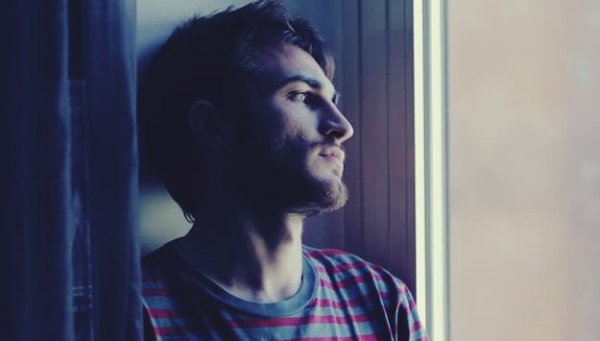Hidden Signs of Sadness You Need to Know About


Written and verified by the psychologist Valeria Sabater
The hidden signs of sadness can disguise themselves in a million different ways. Sadness is a form of discomfort we try to defend ourselves from, and it has a big impact on our psychological balance but a lot of the time it shows up as anger, a bad mood, apathy, or tiredness, instead of just sadness. It covers everything up and takes over everything: mind, body, motivation…
There’s a saying about how some of the people with the most beautiful smiles actually have the saddest stories to tell. And it’s absolutely true. Sadness is one of the few emotions that can truly pass by you unnoticed. But at the same time it’s one of the hardest ones to understand and manage.
“My plan is just to love harder than I’ve ever loved before, hide nothing, and embrace that I’m an imperfect human being. Oh, and sadness — sadness is everything.”
-Sam Smith-
Sadness is kind of like the blinking light that comes on in your car when you’re low on gas. You see it, but you don’t usually pay any attention to it. You just choose to keep on going, like it doesn’t matter.
But that’s when everything starts to go wrong. It’s when you start to lose energy and the world seems like it’s moving much slower than normal, while you’re left behind, out of tune, and trapped in a strange ditch that has an inexplicable surreal feeling.
Understanding the hidden signs of sadness will help you react much more quickly to it. Identifying it and being more receptive to its clues will also help you manage it better. You must look straight at this complex emotion if you want to know what it’s trying to tell you.

Sadness: the great unknown
There’s a really interesting book called The Positive Power of Negative Emotions, by psychologist Tim Lomas. He talks about how we generally look at sadness as something that’s not right. We see it as some kind of condition that it’s best not to talk about. We choose to swallow it and just hope it just leaves at some point.
It’s worth pointing out here that the field of positive psychology is making some great breakthroughs with this. People have even started to call it the “second wave.” This new research perspective wants us to understand something truly important about emotions: some are so complex we can’t label them as positive or negative.
Think of love, for example. When you love someone it’s very normal to experience the most incredible joy. But the next moment you might end up feeling absolute devastation. Just like life itself, emotions can go from light to dark in the matter of a minute, they’re so complex and rich.
Sadness is no different, and most of us tend to label it as “negative.” But that just makes us forget everything this feeling can bring to us and inspire in us. It can actually lead to some really significant (and really positive) changes.

Hidden signs of sadness
As you might guess, the hidden signs of sadness encompass a wide range. It doesn’t help that everyone can experience them in a totally different way. But there are still some common points.
Constant anger, bad mood
Extreme anger is a very common disguise for sadness. It’s like sadness’ release valve or way of expressing itself. It’s like an emotional flash that comes out at the worst time. When you can’t look straight at what’s causing your sadness or you refuse to accept reality, anger arises. You’ll start to feel frustrated, and in the worst case, rage.
Tiredness, psychomotor slowness, muscle pain
Emotions are very wise, and the wisest of them all is sadness. It takes action when there’s something important you’re ignoring. So your brain reduces its energy levels to force you to “slow down.” What it’s really trying to do is get you to look inside yourself and undo that emotional knot.
That’s why it’s so common to experience tiredness, insomnia, and even muscle pain when you’re sad. It’s a warning sign for you to stop and slow down a little bit.

Unfocused, scatter-brained
There’s also a popular saying about how there’s no emotion as inspiring as sadness. This is true too, and it’s one of the hidden signs of sadness you should keep in mind.
- A scattered brain trying escape reality is looking for a new place where it can express itself and be alone. That’s why when you’re sad you avoid social contact, and that’s why it makes the world seem strange. You need intimacy and a way to express yourself.
- Writing, drawing, composing… They’re all great ways to help your brain find a calm place to work in. That’s why we all need something like it to pour our emotions into and shine a light on the true form of our sadness.
Being more sensitive
Another hidden sign of sadness is sensitivity. It makes you much more empathetic to other people’s emotions. It connects you more to matters of the heart than matters of the brain. You see things you never noticed before.
You can spend hours watching raindrops slide down a windowpane. You can even pass the time watching the wind shake the leaves on trees…All these little things can suddenly bring you to tears, and it brings relief.

Do you recognize these signs in you? Going beyond just recognizing it, try to look at sadness in a new way. It has the power to make you grow. It encourages you to curl up in the shell of introspection so you can connect with yourself. Its goal is to get you to address your needs, treat yourself with kindness, and wake up.
Sadness is there to help you reflect and its ultimate goal is for you to make changes. So how about listening to it more often, because it’s an emotion with plenty to say.
The hidden signs of sadness can disguise themselves in a million different ways. Sadness is a form of discomfort we try to defend ourselves from, and it has a big impact on our psychological balance but a lot of the time it shows up as anger, a bad mood, apathy, or tiredness, instead of just sadness. It covers everything up and takes over everything: mind, body, motivation…
There’s a saying about how some of the people with the most beautiful smiles actually have the saddest stories to tell. And it’s absolutely true. Sadness is one of the few emotions that can truly pass by you unnoticed. But at the same time it’s one of the hardest ones to understand and manage.
“My plan is just to love harder than I’ve ever loved before, hide nothing, and embrace that I’m an imperfect human being. Oh, and sadness — sadness is everything.”
-Sam Smith-
Sadness is kind of like the blinking light that comes on in your car when you’re low on gas. You see it, but you don’t usually pay any attention to it. You just choose to keep on going, like it doesn’t matter.
But that’s when everything starts to go wrong. It’s when you start to lose energy and the world seems like it’s moving much slower than normal, while you’re left behind, out of tune, and trapped in a strange ditch that has an inexplicable surreal feeling.
Understanding the hidden signs of sadness will help you react much more quickly to it. Identifying it and being more receptive to its clues will also help you manage it better. You must look straight at this complex emotion if you want to know what it’s trying to tell you.

Sadness: the great unknown
There’s a really interesting book called The Positive Power of Negative Emotions, by psychologist Tim Lomas. He talks about how we generally look at sadness as something that’s not right. We see it as some kind of condition that it’s best not to talk about. We choose to swallow it and just hope it just leaves at some point.
It’s worth pointing out here that the field of positive psychology is making some great breakthroughs with this. People have even started to call it the “second wave.” This new research perspective wants us to understand something truly important about emotions: some are so complex we can’t label them as positive or negative.
Think of love, for example. When you love someone it’s very normal to experience the most incredible joy. But the next moment you might end up feeling absolute devastation. Just like life itself, emotions can go from light to dark in the matter of a minute, they’re so complex and rich.
Sadness is no different, and most of us tend to label it as “negative.” But that just makes us forget everything this feeling can bring to us and inspire in us. It can actually lead to some really significant (and really positive) changes.

Hidden signs of sadness
As you might guess, the hidden signs of sadness encompass a wide range. It doesn’t help that everyone can experience them in a totally different way. But there are still some common points.
Constant anger, bad mood
Extreme anger is a very common disguise for sadness. It’s like sadness’ release valve or way of expressing itself. It’s like an emotional flash that comes out at the worst time. When you can’t look straight at what’s causing your sadness or you refuse to accept reality, anger arises. You’ll start to feel frustrated, and in the worst case, rage.
Tiredness, psychomotor slowness, muscle pain
Emotions are very wise, and the wisest of them all is sadness. It takes action when there’s something important you’re ignoring. So your brain reduces its energy levels to force you to “slow down.” What it’s really trying to do is get you to look inside yourself and undo that emotional knot.
That’s why it’s so common to experience tiredness, insomnia, and even muscle pain when you’re sad. It’s a warning sign for you to stop and slow down a little bit.

Unfocused, scatter-brained
There’s also a popular saying about how there’s no emotion as inspiring as sadness. This is true too, and it’s one of the hidden signs of sadness you should keep in mind.
- A scattered brain trying escape reality is looking for a new place where it can express itself and be alone. That’s why when you’re sad you avoid social contact, and that’s why it makes the world seem strange. You need intimacy and a way to express yourself.
- Writing, drawing, composing… They’re all great ways to help your brain find a calm place to work in. That’s why we all need something like it to pour our emotions into and shine a light on the true form of our sadness.
Being more sensitive
Another hidden sign of sadness is sensitivity. It makes you much more empathetic to other people’s emotions. It connects you more to matters of the heart than matters of the brain. You see things you never noticed before.
You can spend hours watching raindrops slide down a windowpane. You can even pass the time watching the wind shake the leaves on trees…All these little things can suddenly bring you to tears, and it brings relief.

Do you recognize these signs in you? Going beyond just recognizing it, try to look at sadness in a new way. It has the power to make you grow. It encourages you to curl up in the shell of introspection so you can connect with yourself. Its goal is to get you to address your needs, treat yourself with kindness, and wake up.
Sadness is there to help you reflect and its ultimate goal is for you to make changes. So how about listening to it more often, because it’s an emotion with plenty to say.
This text is provided for informational purposes only and does not replace consultation with a professional. If in doubt, consult your specialist.







